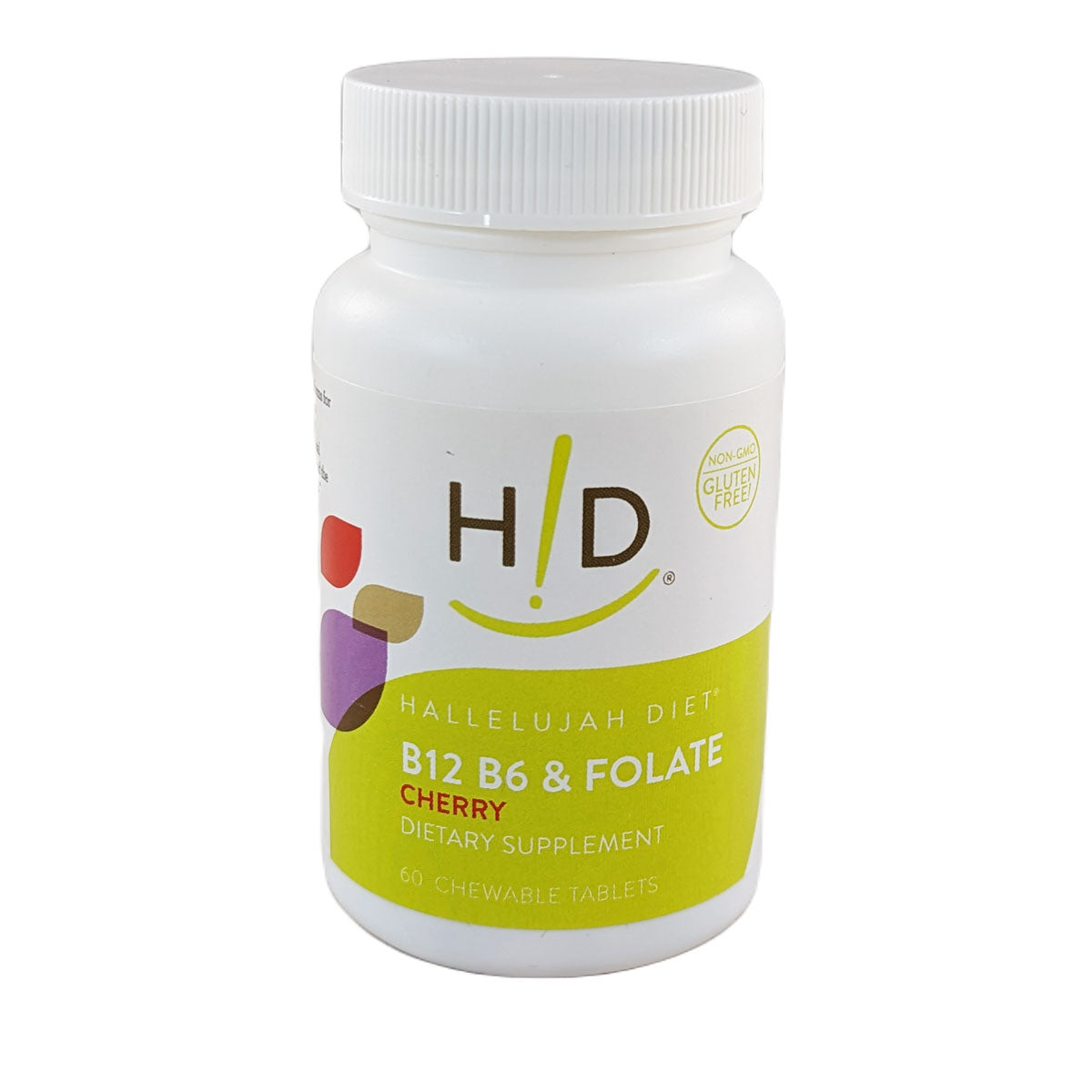Today you will find a blog article from our Director of Research, Michael Donaldson, PhD. Please enjoy the wealth of experience and wisdom this article entails.
Michael Donaldson, PhD writes: Nutrition science can be confusing, and as consumers we are constantly bombarded with messages from every side. There are so many bloggers and different angles on nutrition. And everyone is entitled to their own opinion and some are better than others at sounding authoritative. Who do you trust? Some vitamin D supplements have now included vitamin K with it, like our own Hallelujah Diet Vitamin D3 / K2 supplement. The basic reason to combine D3 and K2 is that vitamin D increases the absorption of calcium and vitamin K2 tells the calcium where to go. But other people have claimed that you should not combine vitamin D and K together. They say we don’t need to supplement vitamin K as nobody is deficient in vitamin K. They say that we get plenty in our diet. Also, our bodies make vitamin K for us. Vitamin K might be dangerous; it might cause hypercalcemia, leading to kidney stones. Vitamin K might make your blood thicker and make it coagulate in the wrong places, like in your arteries or brain. Who’s right? At Hallelujah Acres we bring you health from a Biblical perspective. We believe that God created Adam and Eve and placed them in the Garden of Eden to tend and keep it. We were originally designed to thrive in a garden of plants and trees and to eat a diet of raw plants—primarily fruits, vegetables, nuts and seeds—just pick them and eat them. There are no instructions for cooking our food in Genesis 1:29. We have found over the years that as people adjust their diet and lifestyle to conform more closely to God’s original design that they regain their health and continue to experience vibrant health for many years. In addition to our Biblical perspective, we also lean on modern science to help guide us into making choices that make amends for the corruption of creation after The Fall, so that we can get better results faster. This is how we came to understand the need for additional vitamin D. We should get it from sunshine, but between our modern lifestyle that keeps us indoors a lot and living a long ways from the equator we find that many people will experience better health by taking a vitamin D supplement. And scientific experiments have shown that many people need around 5,000 IU a day to get close to the optimal range of 50-70 ng/ml of 25(OH)D form of vitamin D in their bodies. So, science has been very helpful to understand our modern circumstances and how to mitigate at least some of the negative effects of it. That isn’t to say that you shouldn’t get outside and get some sunshine, as there are a multitude of benefits from natural sunshine that go way beyond vitamin D. Now science has been showing that vitamin D and vitamin K are quite interrelated. Let’s examine these claims for not using a vitamin K supplement one at a time.
- We get plenty of vitamin K in our diet.
- Our bodies make vitamin K for us.
- Nobody is deficient in vitamin K.
- Vitamin K is dangerous.
- Vitamin D is safe without vitamin K.
There is a LOT of vitamin K1 in green plants and when you follow the Hallelujah Diet you get around 1,000 micrograms of vitamin K1 a day. BarleyMax itself is a great source of vitamin K1, providing around 30 mcgs, or 25% of the 120 mcg adequate RDA dose in a single 2-gram serving! So, yes, there is a lot of K1 in our diet. But there is very little vitamin K2 in a plant-based diet. And vitamin K1 and K2 are different, and are not completely interchangeable. This is very important to understand. Vitamin K1 can be converted into vitamin K2 in some parts of the body, but there are definite cardiovascular, bone, and brain health benefits to getting some pre-formed vitamin K2 in the body. For more details on the specifics of these differences see the Vitamin D3/K2 webinar on our website.
1. Our bodies make vitamin K for us.
There is still little evidence that the vitamin K from our gut microbiota does us much good. An investigative team from the Human Nutrition Research Center on Aging at Tufts University, in 2017 found a significant amount of menaquinones produced in the gut but they said, “Menaquinones (the vitamin K2 form) were not detected in serum, and neither fecal concentrations of individual menaquinones nor the menaquinone group was associated with any marker of inflammation.” There would be no issues of vitamin-K dependent proteins not being activated if our bodies truly made vitamin K2 for us. But these issues affect bone health and contribute to calcification of heart arteries and soft tissues, and other effects we are still learning about.
2. Nobody is deficient in vitamin K2.
The National Osteoporosis Foundation states that 1 of every 2 women and 1 of every 4 men over the age of 50 will suffer a broken bone due to osteoporosis. While calcium and vitamin D are important, magnesium, vitamin C, vegetables and vitamin K2 play a huge role as well. Vitamin K-activated osteocalcin is the rebar in your bones. Just like calcium-based concrete is brittle without rebar, so bones without vitamin K-activated osteocalcin are brittle and prone to fracture, regardless of how dense they appear to be on a DEXA scan. This was proven in a study of over 7,500 elderly independently-living healthy women. Undercarboxylated osteocalcin is an established, often-occurring risk factor for osteoporotic bone fractures. Even children are susceptible. When 20 children with low-energy fractures were compared with a control group of children without fractures, the children with low levels of vitamin-K activated osteocalcin had a 78-fold higher risk of fracture. So, low vitamin K2 status is a huge risk factor for both young and old. A population-based study in the Netherlands, PREVEND, showed that about 30 percent of the population had insufficient functional levels of vitamin K. But it was worse if a person was already sick. About 50 percent of the people who had cardiovascular disease, diabetes, or chronic kidney disease did not have sufficient levels of vitamin K2. So, we conclude that vitamin K2 insufficiency is more likely the rule, not the exception, among those who are elderly or suffering from disease.
3. Vitamin K is Dangerous
The interaction between anticoagulant drugs and vitamin K has been misunderstood. The doctors tell us to stop taking vitamin K so that it doesn’t interfere with their drugs. But actually, it is the drugs that are vitamin K antagonists. Vitamin K is what belongs in the body and the drugs interfere with all of the activity of vitamin K, not just its coagulation activity. So, the use of vitamin K antagonist drugs causes higher calcification of the arteries, by interfering with the activation of MGP protein. This was first seen in chronic kidney disease patients, because they are at such high risk. To make drug therapy safer, coumadin-based drugs should be replaced whenever possible with anticoagulants that do not interfere with vitamin K activity. Heparin is a good example of an alternative choice. Of course, this is a decision for you to make with your doctor, as we are not giving medical advice here. Coumarin is bad for your bones and leads to calcification of your arteries, which is itself a risk factor for heart disease. If coumadin must be used instead of a safer drug, then regular supplemental vitamin K actually makes anticoagulation therapy safer. The doctor just needs to get the dosage correct for your regular intake of vitamin K, including supplements.
4. Vitamin D is safe without vitamin K.
It was speculated in 2017 that since vitamin D causes an increase in the production of vitamin K-dependent proteins this interaction could lead to a relative shortage of vitamin K2 in a person, especially when taking a large dose of vitamin D.
Now in 2019 we have the proof. In a randomized, placebo-controlled (RCT) study of people with depressive symptoms 66 people between 60-80 years of age were given 1200 IU of vitamin D3 per day for 6 months and compared with 65 people taking a placebo. When the analysis took into account multivitamin and vitamin K antagonist use, there was a significant difference in functional vitamin K levels at 6 months. The damage would likely have been worse with a useful amount of vitamin D, like 5000 IU per day. So, there you have it. Vitamin D has been shown in a RCT to cause a relative insufficiency of vitamin K2. It is not actually safe to take large doses of vitamin D without a good source of vitamin K2 as well. Even if you are taking vitamin D for non-bone benefits, you should consider taking vitamin K2 along with it. So, let’s summarize what we have learned here:
-
We get plenty of vitamin K in our diet. We don’t. We get lots of K1, but no K2. They are not the same.
-
Our bodies make vitamin K for us. The vitamin K from our gut microbiota doesn’t seem to help us much.
-
Nobody is deficient in vitamin K2. About 30 percent of the adult population in a city in the Netherlands had insufficient levels of vitamin K2. If a person had a chronic disease, it was more like 50 percent. Insufficiency is very common.
-
Vitamin K is dangerous. Drugs are dangerous and have side effects. Vitamin K is safe and has side benefits.
-
Vitamin D is safe without vitamin K. Supplemental vitamin D without vitamin K2 causes a functional deficiency in vitamin K, proven in a RCT.
References:
- Karl JP, Meydani M, Barnett JB, Vanegas SM, Barger K, Fu X, et al. Fecal concentrations of bacterially derived vitamin K forms are associated with gut microbiota composition but not plasma or fecal cytokine concentrations in healthy adults. Am J Clin Nutr . 2017 Oct ;106(4):1052–61. Available from: https://www.ncbi.nlm.nih.gov/pmc/articles/PMC5611782/
- Vergnaud P, Garnero P, Meunier PJ, Breart G, Kamihagi K, Delmas PD. Undercarboxylated osteocalcin measured with a specific immunoassay predicts hip fracture in elderly women: the EPIDOS Study. J Clin Endocrinol Metab . 1997 Mar;82(3):719–24. Available from: http://www.ncbi.nlm.nih.gov/entrez/query.fcgi?cmd=Retrieve&db=PubMed&dopt=Citation&list_uids=9062471
- Popko J, Karpiński M, Chojnowska S, Maresz K, Milewski R, Badmaev V, et al. Decreased Levels of Circulating Carboxylated Osteocalcin in Children with Low Energy Fractures: A Pilot Study. Nutrients . 2018 Jun 6 ;10(6):734. Available from: http://www.mdpi.com/2072-6643/10/6/734
- Riphagen IJ, Keyzer CA, Drummen NEA, De Borst MH, Beulens JWJ, Gansevoort RT, et al. Prevalence and Effects of Functional Vitamin K Insufficiency: The PREVEND Study. Nutrients . 2017 Dec ;9(12):1334. Available from: https://www.mdpi.com/2072-6643/9/12/1334
- van Ballegooijen AJ, Pilz S, Tomaschitz A, Grübler MR, Verheyen N. The Synergistic Interplay between Vitamins D and K for Bone and Cardiovascular Health: A Narrative Review. Int J Endocrinol . 2017;2017:7454376. Available from: https://www.ncbi.nlm.nih.gov/pubmed/29138634
- van Ballegooijen AJ, Beulens JWJ, Schurgers LJ, de Koning EJ, Lips P, van Schoor NM, et al. Effect of 6-Month Vitamin D Supplementation on Plasma Matrix Gla Protein in Older Adults. Nutrients . 2019 Feb ;11(2):231. Available from: https://www.mdpi.com/2072-6643/11/2/231































